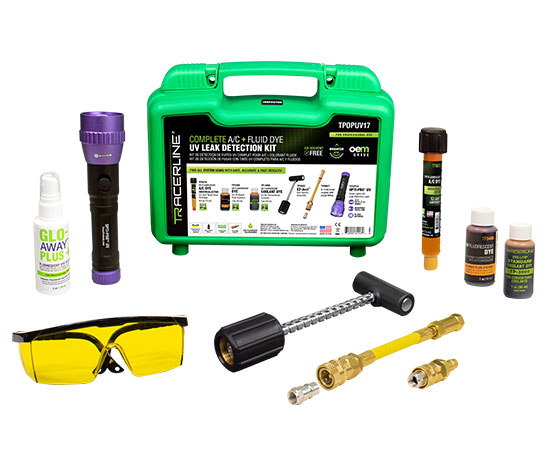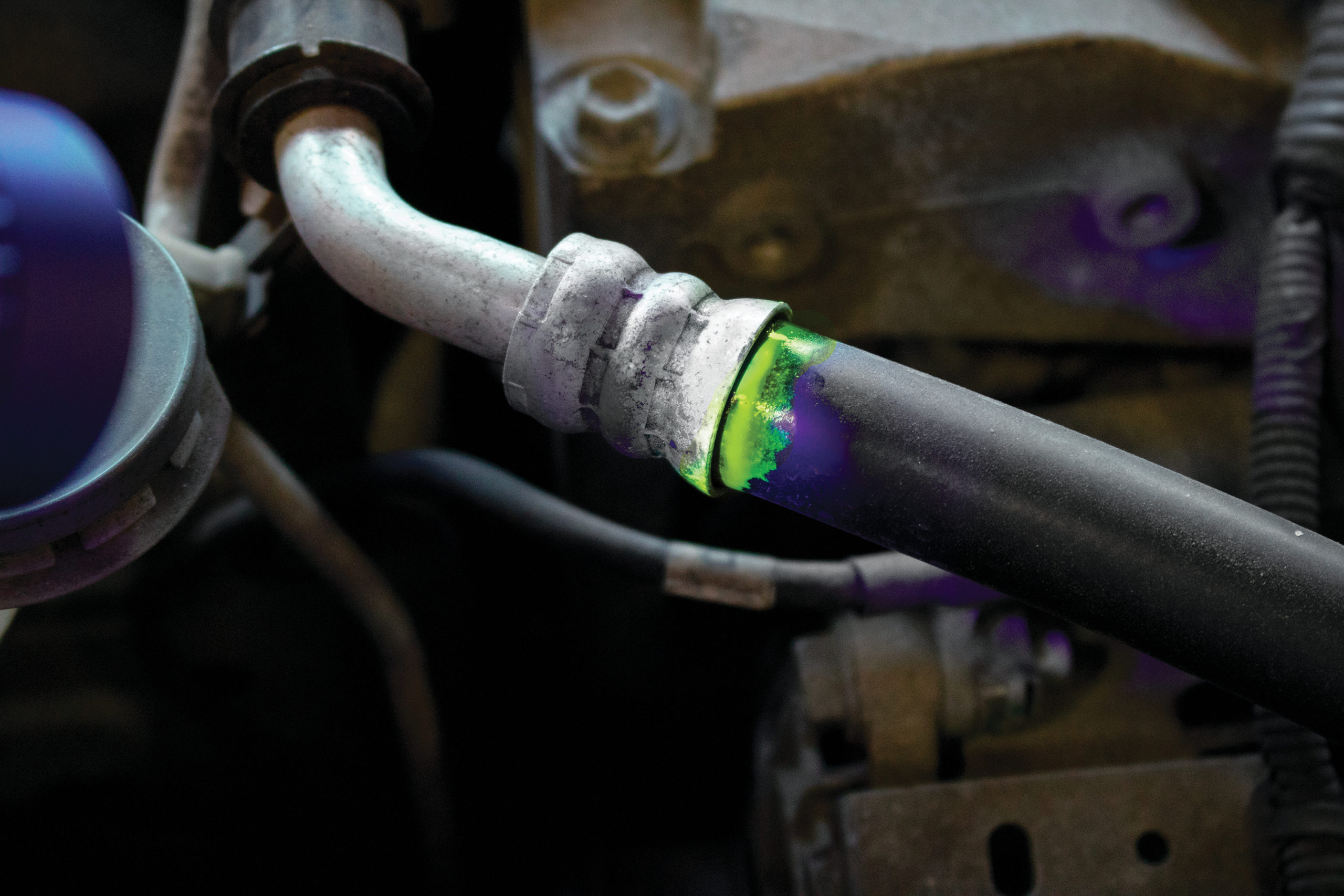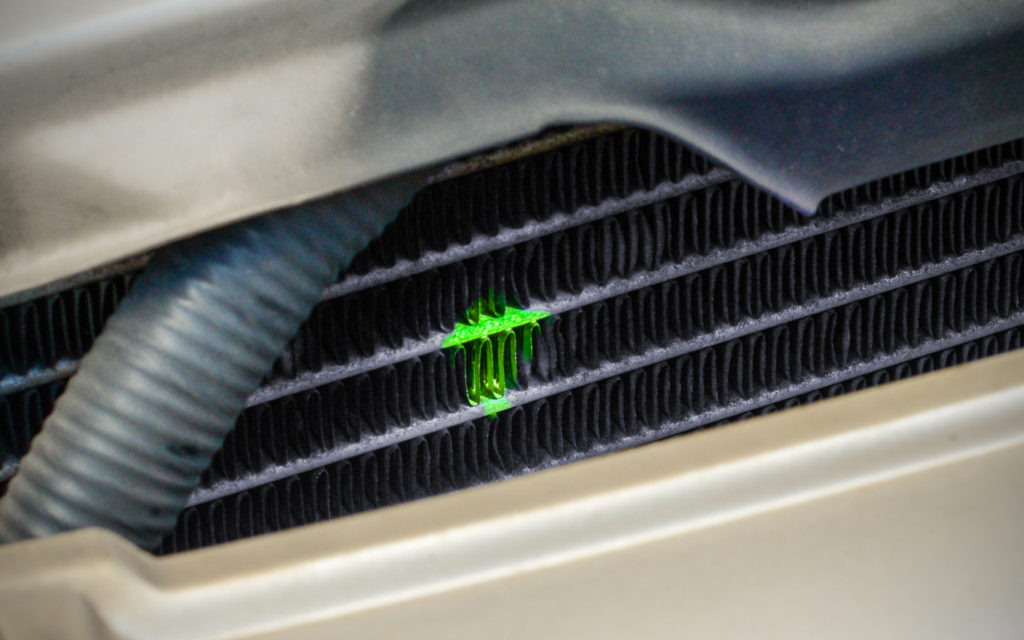Mobile HVAC UV Leak Detection During COVID
UV leak detection is used to find leaks in mobile HVAC systems during the COVID pandemic. Recently, the NYPD authorized the use of a car’s heating system to sanitize emergency vehicles. Hot coolant is used to heat the interior of your car. If there’s a coolant leak, the heating capacity is diminished, and the engine is at risk of overheating.
To Disinfect, Crank Up the Heat
The N.Y.P.D. and other departments were concerned about the spread of the coronavirus in vehicles. Ford’s answer is software to raise the temperature. Law-enforcement agencies around the country have increasingly found themselves transporting people infected with the coronavirus, and facing the challenge of how to quickly and effectively sanitize their vehicles.
Ford Motor, a major supplier of police cruisers, has come up with an answer. The carmaker has developed a software update that can raise the interior temperature to 133 degrees Fahrenheit for 15 minutes, which it says is enough to eliminate the virus.
To be sure this approach would be effective, Ford turned to Ohio State University, where researchers examined the ability of high heat to destroy viruses in vehicles. The researchers performed tests using a coronavirus similar to the strain that has caused many deaths in the United States, said Jesse Kwiek, an associate professor of microbiology at Ohio State.
A solution containing the virus was spread on the carpet, plastics and other materials used for the interiors of Ford’s police vehicles, and those parts were heated to 120 degrees for 15 minutes, Mr. Kwiek said. At that temperature, the study concluded, the protein that is a crucial component of the virus’s structure unravels. “Of all the materials we tested, we were never able to recover infectious viruses for any,” he said.
With the doors and windows closed, the software heats the interior to 133 degrees. After 15 minutes at that temperature, the vehicle’s air-conditioning comes on to cool off the interior.
Checking Your AC and Coolant Systems
Now is the time to make certain your vehicle’s A/C and heating systems are in top-shape and free of any defects. Vital fluids such as coolant and refrigerant can affect the performance of your vehicle. Not being aware of the status of these systems can lead to inefficiencies, unnecessary strain, and eventual mechanical breakdown.
To make sure your heating system is operating at full capacity, turn your heat all the way up and allow the unit to run for about 10 minutes. Listen to your fan system. If the system sounds like it’s struggling, inspect the air ports. The sound your system is making is often overlooked in the everyday use of your vehicle. If anything sounds strange, first make sure there are no obstructions in your interior vents. Then check intake ports on the outside of your vehicle. Clear away any leaves, twigs, or other debris.
Checking For Problems
If the fan system sounds fine and the air flow is normal, check the heat coming out of your vents. There should be enough heat coming out of your vents to warm the interior of your car quickly after it has been running for 15 or more minutes. Be sure to place your hand over the vents near the dashboard, the floor, and the near the windshield to assure the heat flow is uniform.
If there is inadequate heat flow, this may be an indicator that your coolant level is low. Coolant is critical to the safe and controlled operation of your vehicle.
Your heating system uses hot coolant to warm the interior of your car. Coolant circulates around your engine block and transfers excess heat to the coolant, which is then dissipated ambiently via the radiator system. If coolant levels are insufficient or depleted, your engine can quickly overheat or worse.
Checking Your Coolant System
Checking the coolant level in your system simple. But your vehicle shouldn’t be losing coolant under normal circumstances. Cracks in your vehicle’s hoses, an improperly fitted radiator cap, a damaged water pipe, or a defect in your radiator can lead to the loss of coolant in your vehicle’s system.
To check your coolant system, first allow the vehicle to cool down. Open the hood and locate the coolant reservoir tank. The reservoir tank is translucent and made of high-grade plastic. Your coolant will be stored in this tank. The color of the coolant will usually be red, green, blue, or yellow – depending on your system’s specifications.
Checking the Connections
Once you locate the coolant reservoir tank, check the hose running to the tank and the other connections to the radiator. Inspect the condition of the hoses and the connections. Check for cracks, bulging, or deterioration. If everything appears to be in good condition, check your coolant level by removing the cap on the tank and looking inside. Your reservoir tank has two gradients to check if there is a proper amount of coolant in your system: one gradient for checking the coolant while the vehicle is HOT and operating, and another gradient for checking the coolant level when the vehicle has cooled. Be sure the coolant level meets the COLD gradient marked on your coolant reservoir.
Checking the Quality of the Fluid
Next, check the quality of your coolant. If the coolant looks oily, rusty, or murky, bring your vehicle to a qualified auto technician.
If there’s no coolant in the reservoir, this means your coolant level is low. Coolant must be added and your system should be inspected thoroughly for leaks. Consult an auto technician for more information about adding coolant to your system.
Inspect Your AC System Now
Now is the time to check your vehicle’s cooling system. Start by checking your A/C system the same way you checked your heating system. Go to the control console, crank the A/C all the way, and check to see if the system is running properly. If you’re A/C system is failing to produce cold air quickly and sufficiently, you may have a problem with your vehicle’s A/C system.
If you are uncomfortable or unsure about checking your vehicle’s systems, simply bring your vehicle to your auto technician.
Tracer Products Has You Covered
Tracer Products offers a wide variety of leak detection tools. Our specially designed fluorescent leak detection dyes can be added to your vehicle’s A/C system harmlessly. Our array of fluorescent dyes can be added to all of your vehicle’s fluid-based systems – such as coolant, transmission fluid, power steering fluid, engine oil, and more.
CLICK HERE TO LEARN MORE ABOUT OUR TPOPUV17 LEAK DETECTION KIT
 About Tracer Products
About Tracer Products
Proudly made in the U.S.A., Tracer Products is a family-owned company with three generations of experience in delivering award-winning professional service and the industry’s most powerful leak detection dyes, inspection lamps and diagnostic tools. Today, major OEMs around the world trust the Tracerline brand. Over 275 million vehicles have used Tracerline’s UV fluorescent leak detection dyes to ensure quality and system integrity. For more than 60 years, Tracer Products has engineered the highest-quality, premium performance leak detection dyes and products. As the inventors of UV fluorescent leak detection, we take pride in crafting the most superior leak detection dyes in the industry.




